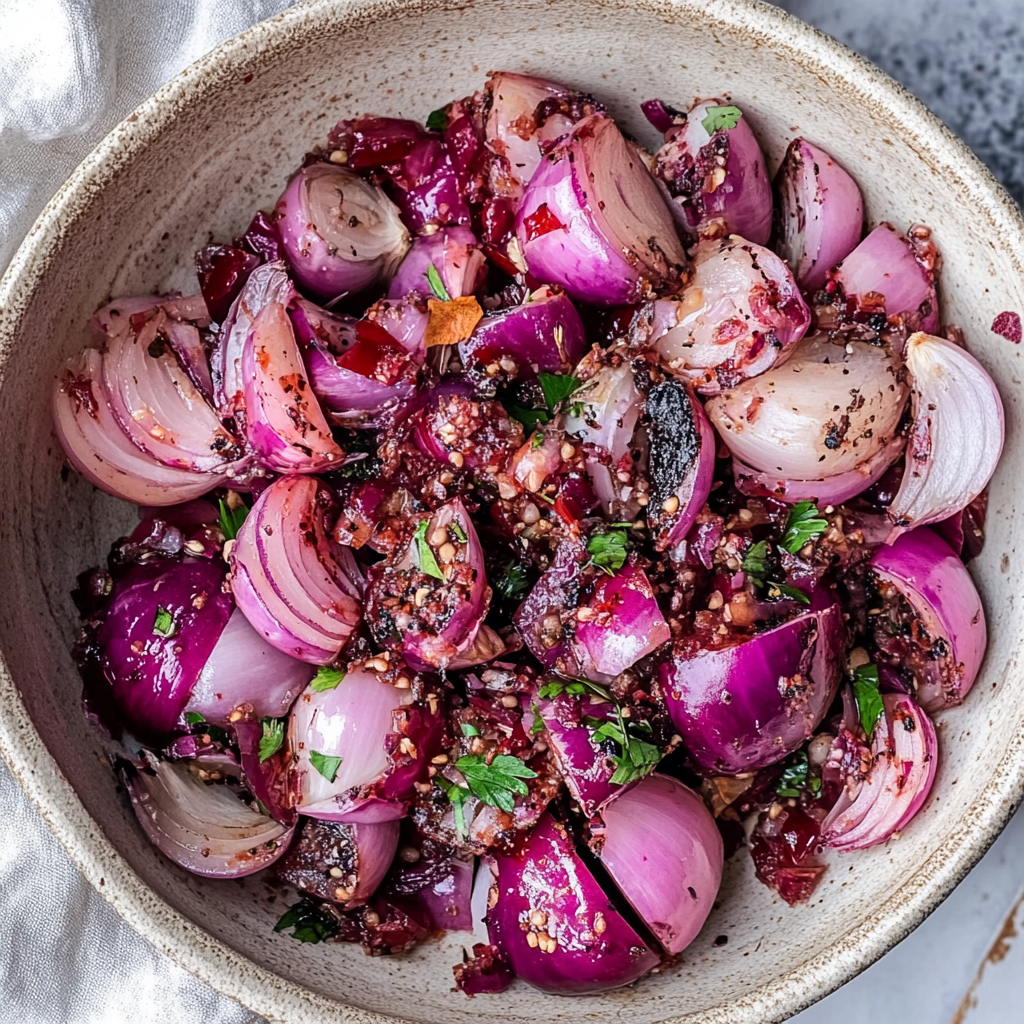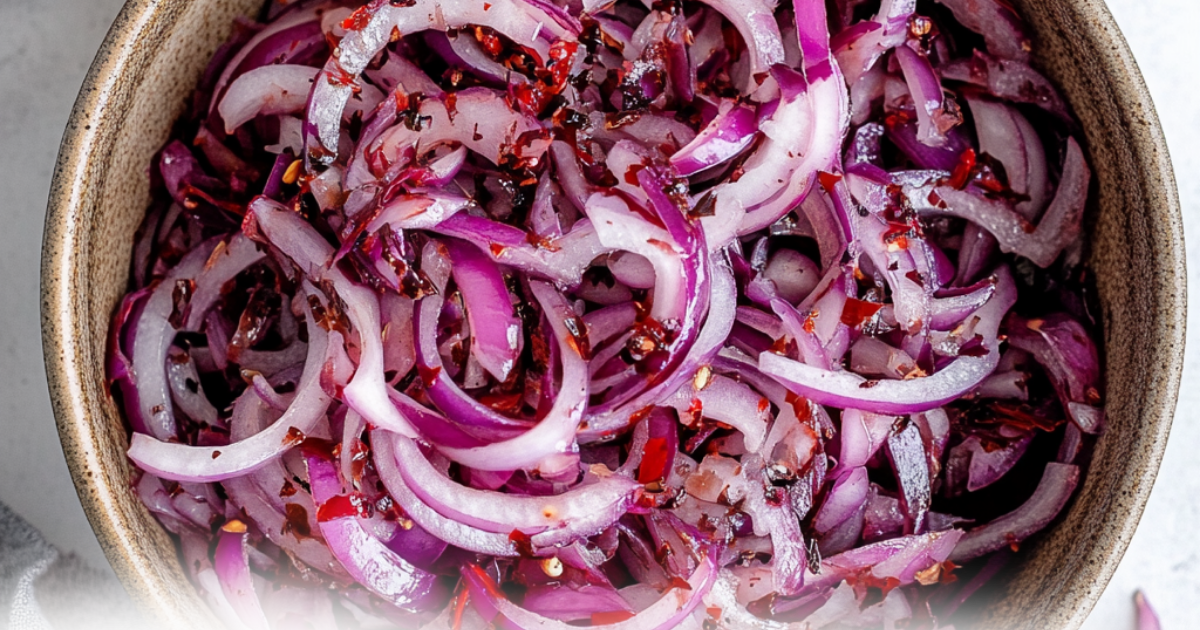Onions are a staple ingredient in countless salads, offering crunch, flavor, and a touch of sweetness. Yet, preparing onions for a salad can be a tricky business. Whether it’s their intense aroma or the sharp bite they leave behind, mastering the art of onion prep is essential for a balanced and delightful salad. This guide walks you through how to prep salad onion effectively, exploring different onion types, techniques to reduce harshness, and tips to enhance their natural flavors. By the end, you’ll have all the tricks to create salads that sing with perfectly prepped onions.
Table of contents
Why Prep Salad Onions?
Understanding the Role of Onions in Salads
Onions bring life to salads with their unique crunch and bold taste. They’re a fantastic way to add texture and enhance the visual appeal of your dish. Red onions, for example, create a pop of color, while spring onions add a subtle zing. But it’s not just about looks—onions are nutrient-packed. They’re low in calories but rich in antioxidants, vitamins, and minerals that promote overall health.

Besides their health benefits, onions work as flavor balancers. They pair wonderfully with sweet ingredients like tomatoes and citrus fruits, while their savory notes complement dressings and cheese. However, raw onions can sometimes overwhelm a salad. That’s where proper preparation steps in, ensuring they enhance, rather than dominate, your dish.
Common Issues with Raw Onions
Raw onions aren’t everyone’s cup of tea. For some, their strong taste and lingering aftertaste can be off-putting. Others find them difficult to digest, leading to discomfort after eating. These issues often come down to improper preparation.
Unwashed, thickly sliced onions can overpower milder salad ingredients, disrupting the harmony of flavors. Additionally, their natural sharpness might mask the subtler tastes of other vegetables. Thankfully, a few simple techniques, like soaking or pickling, can make onions much more salad-friendly.
By understanding why prepping onions is crucial, you’re already a step closer to making salads that are both flavorful and easy on the palate.
Choosing the Right Onion for Your Salad
Different Types of Onions
Not all onions are created equal, especially when it comes to salads. Choosing the right type of onion can make or break your dish. For instance, red onions are a popular choice for their mild flavor and striking color. They’re perfect for raw salads because they balance crunch with a subtle sweetness. On the other hand, white onions have a sharper taste and are better suited for bold, spicy salads.

If you’re looking for something milder, consider spring onions or shallots. These varieties bring a delicate, almost sweet flavor to the table, making them ideal for salads with softer, nuanced flavors. By understanding the differences between these options, you can choose the best onion for your dish every time.
When to Use Each Type
Timing is everything when selecting onions. If you’re wondering how to prep salad onion for a summer meal, red onions pair beautifully with fresh tomatoes and cucumbers. In winter, white onions complement heartier ingredients like roasted vegetables or beans. Shallots, with their mild bite, are excellent for vinaigrette-based salads.
Seasonality also plays a role. Spring onions are at their peak in the warmer months, while red and white onions are available year-round. By aligning your onion choice with the season and salad style, you’ll create harmonious flavors that elevate the entire dish.
Step-by-Step Guide to Prepping Salad Onions
Peeling and Cleaning
Before slicing, it’s important to prepare your onions properly. Start by removing the papery outer layers. To do this efficiently, use a sharp knife to trim off the root and tip, then make a shallow cut down the side to peel away the skin. If you’re using spring onions, simply wash them under running water to remove any dirt or grit.

Having the right tools makes the job easier. A sharp chef’s knife or mandoline slicer ensures precision, while a cutting board keeps your prep area safe and clean. With clean onions, you’re ready to move on to slicing.
Slicing Techniques
When learning how to prep salad onion, slicing is crucial. For raw salads, thin slices work best. They mix well with other ingredients without overpowering the dish. To achieve this, hold the onion firmly and slice it as thinly as possible.
If your salad calls for diced onions, start by cutting the onion in half lengthwise. Lay each half flat, make horizontal cuts, and then slice vertically to create uniform pieces. This method is ideal for chopped salads or salsas where smaller pieces are preferable.
Softening the Sharpness
Raw onions can be harsh, but there are easy ways to mellow their flavor. Soaking onion slices in cold water for 10–15 minutes helps reduce their bite. For an added twist, soak them in a mixture of water and a splash of vinegar or lemon juice. This not only tames the sharpness but also infuses a subtle tang.
Special Prep for Spring Onions
Spring onions require minimal prep but add a lot to salads. Trim off the root ends and remove any wilted green tops. Slice the white and green parts diagonally for an elegant look or finely chop them to use as a garnish. These tender onions blend seamlessly into salads without overwhelming other flavors.
Tricks to Improve Onion Flavor
Reducing Harshness
One of the simplest ways to improve the flavor of onions in salads is to tame their natural sharpness. How to prep salad onion effectively includes soaking sliced onions in cold water for about 15 minutes. This step removes some of the sulfur compounds responsible for their strong taste. For an extra burst of flavor, try soaking them in a mixture of water and a splash of vinegar or lemon juice. This method not only mellows the bite but also adds a zesty kick that complements most salads.
Another trick is salting. After slicing the onion, sprinkle a small amount of salt and gently massage it in. Let it rest for 10 minutes before rinsing off the excess salt. This process draws out bitterness, leaving a sweeter, more pleasant taste.
Enhancing Onion Sweetness
If you’d like your onions to lean more toward sweetness, caramelizing them lightly can do wonders. While raw onions are typical for salads, lightly sautéed onions can bring a unique twist to warm salad recipes. Pair them with sweet ingredients like fruits or honey-based dressings for a balanced flavor profile.
For raw onion enthusiasts, balancing their natural sharpness with other sweet salad components—like raisins, apples, or dried cranberries—creates a delightful harmony of flavors. Don’t forget to experiment with vinaigrettes or creamy dressings to add complexity and richness.
Recipes Featuring Prepped Salad Onions
Simple Red Onion Salad
If you’re new to how to prep salad onion, this quick red onion salad is a great start. Slice red onions thinly, soak them in cold water for 10 minutes, and toss with olive oil, balsamic vinegar, salt, and pepper. Add cherry tomatoes and fresh basil for a vibrant, flavorful dish that’s ready in minutes.
Spring Onion and Herb Salad
For a fresh and light option, combine finely sliced spring onions with parsley, dill, and cilantro. Dress the mix with lemon juice, olive oil, and a pinch of salt. This salad is perfect alongside grilled meats or as a topping for flatbreads.
Pickled Onion Topping
Pickled onions are a versatile addition to salads. To make them, thinly slice red onions and soak them in a brine of vinegar, sugar, and salt for an hour. Use these tangy slices to garnish salads, tacos, or even roasted vegetables. They’re a simple way to add a pop of flavor to any meal.
Creative Ways to Use Prepped Salad Onions
Adding Onions to Different Salad Styles
Once you’ve nailed how to prep salad onion, it’s time to get creative. Prepped onions can elevate all kinds of salads. For example, thinly sliced red onions bring a vibrant crunch to Greek salads, pairing beautifully with feta, cucumbers, and olives. In contrast, sweet, pickled onions can be a star ingredient in taco salads or grain bowls.
Spring onions shine in Asian-inspired salads, where their mild flavor complements soy-based dressings and crunchy vegetables. For a rustic touch, add caramelized onions to warm spinach salads with goat cheese and walnuts.
Beyond Salads: Versatile Uses for Prepped Onions
Prepped salad onions aren’t just for salads. They make fantastic toppings for sandwiches, burgers, and wraps, adding texture and flavor. Use them as a garnish for soups or mix them into grain dishes like quinoa or couscous. Their versatility allows you to repurpose leftovers effortlessly, reducing waste and saving time in the kitchen.
With so many ways to use them, prepped onions are a kitchen staple that goes far beyond basic salads. Let their flavors shine in every dish you create!
FAQs: Common Questions About Prepping Salad Onions
How Do You Store Prepped Onions?
Once you’ve mastered how to prep salad onion, proper storage is essential. Prepped onions should be stored in an airtight container to prevent them from drying out or spreading their pungent smell to other foods in the fridge. For best results, keep them in the refrigerator and use them within 3–5 days to maintain their flavor and texture. A quick tip: adding a damp paper towel to the container can help retain freshness.
Can You Prep Onions in Advance?
Absolutely! Preparing onions ahead of time is a great way to save time during busy meal prep. Thinly slice or dice your onions, then store them as outlined above. If you’re concerned about strong odors, soaking the onions in water or vinegar before storing can help minimize the smell.
Are Raw Onions Safe to Eat Daily?
Yes, raw onions are safe to eat daily and offer numerous health benefits, including antioxidants and vitamins. However, individuals with sensitive stomachs might benefit from softening onions’ sharpness by soaking or pickling them as part of how to prep salad onion. Moderation and balance are key to incorporating onions into your diet without digestive discomfort.

